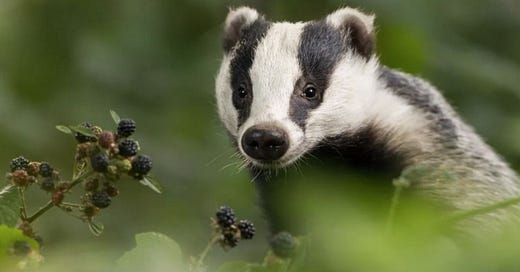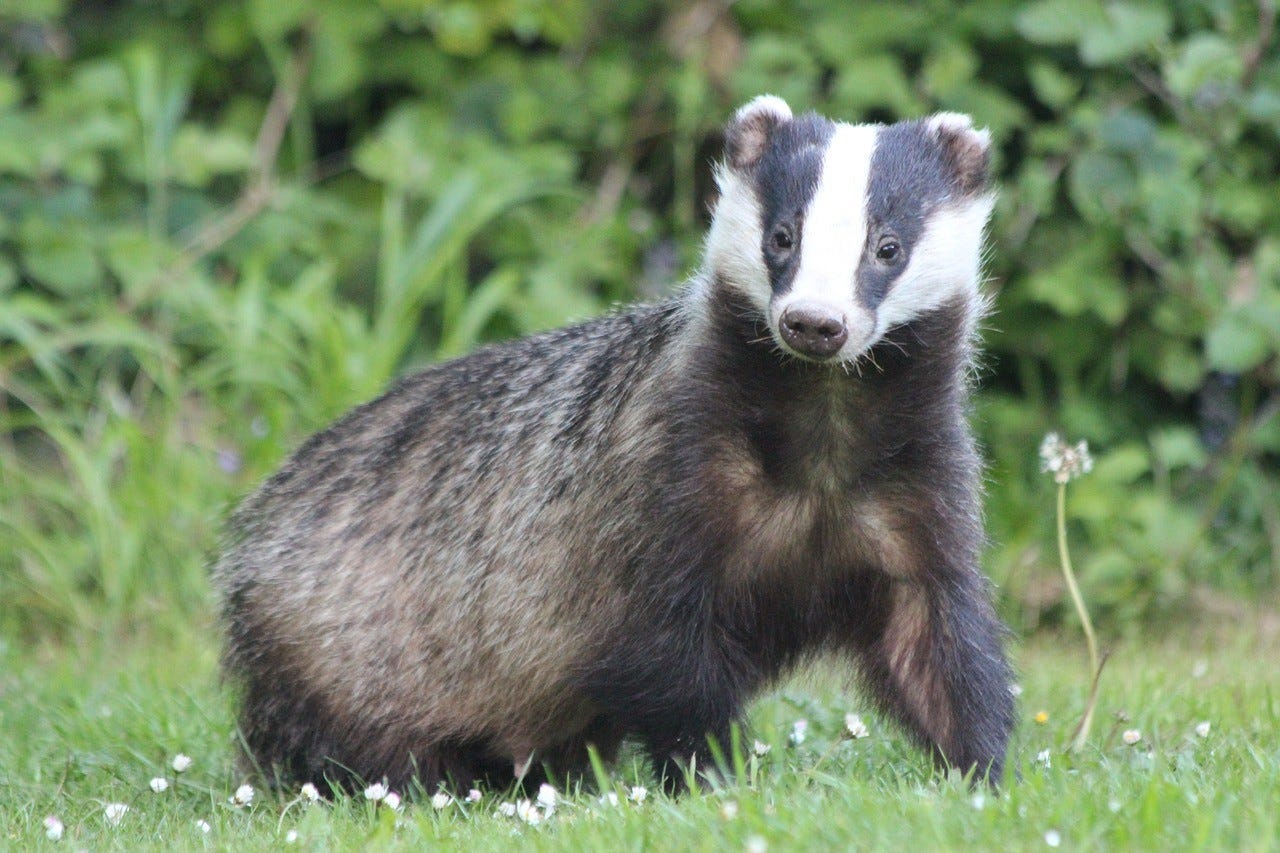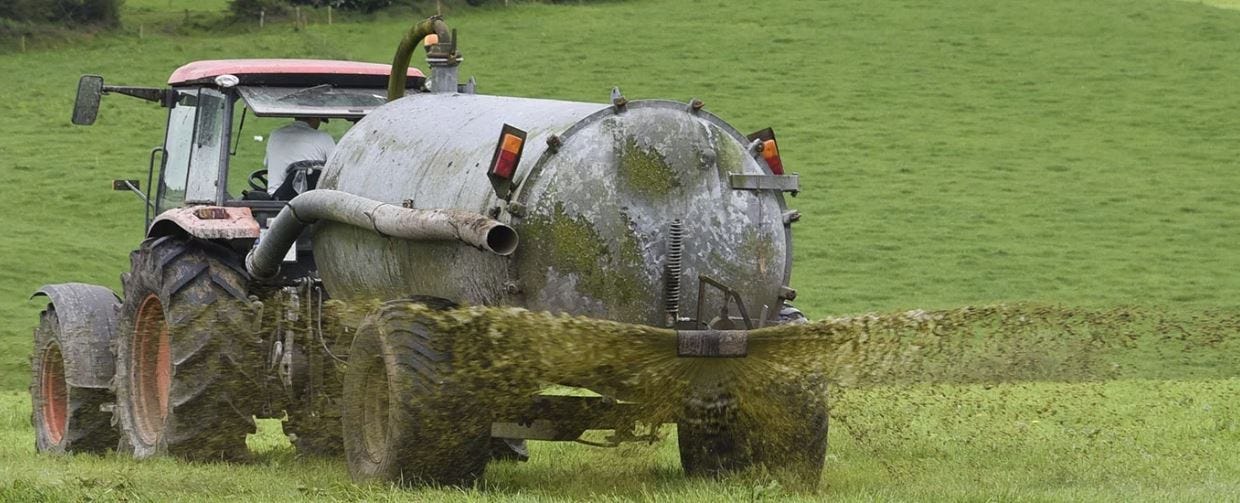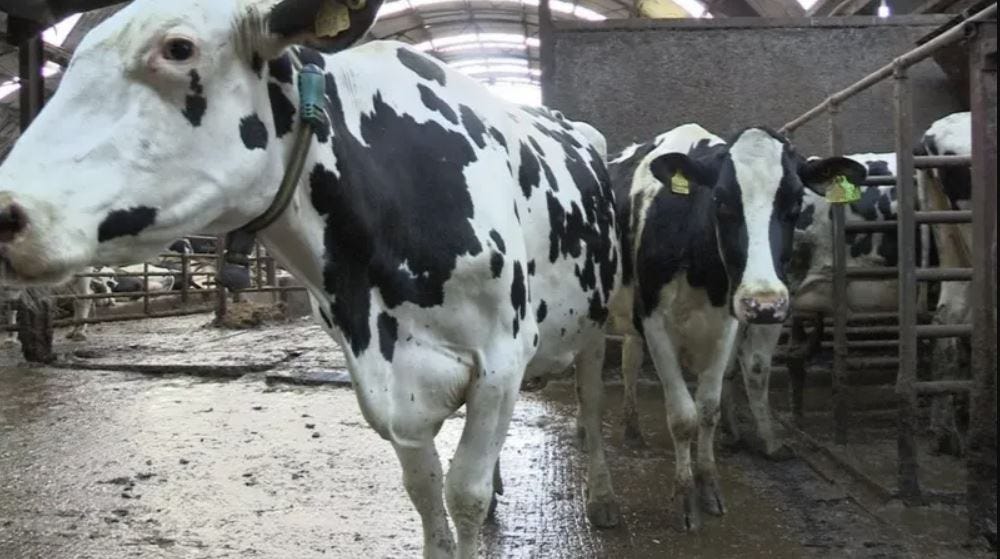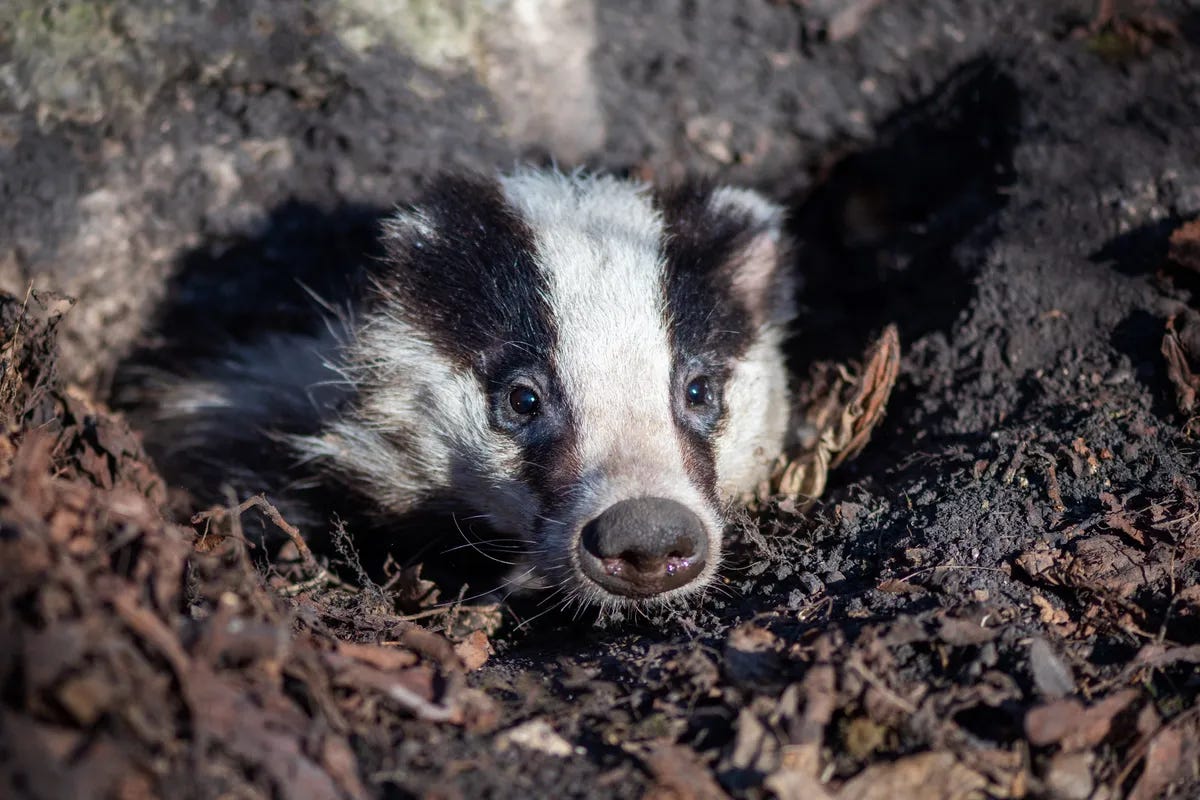In the UK, the term 'badger cull' is well-known, it's been around, it's generational. And so the term continues to be used. Instantly, everyone knows what this is about - and yet the very term itself is a blind, it is 'soft language' to - in George Carlin's words - 'allow people to protect themselves from having to deal with reality.' Let's call a spade a spade, we should always opt for reality and clarity. 'Badger cull' stands for mass-slaughter of badgers to combat the spread of bTB (bovine tuberculosis).
Bovine TB (mycobacterium bovis)
Let's start by making one thing very clear - the enemy is not the badger, the enemy is bTB - and that is one terrifying enemy. This infectious disease is chronic and affects mammals - everything from cattle to deer, to pigs, foxes, possums, rodents, cats and, yes, humans. The disease is contagious and spread by contact with infected domestic and wild animals. The disease works slowly - it can take months or years to kill an infected animal - and so that long period comes with lots of opportunity to infect others as they come nose-to-nose or ingest contaminated feed or water.
The slowness of the disease is apparently coupled with something else - the bacteria can lie dormant without causing disease. When it manifests, it does so with weakness of the host, with loss of appetite, weight loss, fever, coughing and diarrhea. But unless you spot these symptoms, or enlarged lymph nodes, what to do as a farmer other than worry?
Farmers' lives and livelihoods
Most farmers, just as most people overall, try to live their lives as decent human beings, simply trying to live good lives, for themselves, for their family and community. There's no doubt that the very real danger - accompanied with constant fear - comes with mental health challenges. Eventually all of that worrying gets to you. Mental and physical health are always linked - and so no doubt farmers are also physically affected by the bTB-induced long-term struggle.
And then there's the financial cost, of course. While farmers are compensated for diseased cattle that must be slaughtered (here's the current compensation table) that only compensates so much if you're a dairy farmer and lose a great deal more in missed-out milk sales. TBFREE England (as site by the National Farmers Union) writes that the costs to farmers are related to "the loss of animals, labour, productivity, on-farm testing costs, reduction in yields or growth rates and business disruption due to the movement restrictions that are put in place."
bTB eradication costs
A 2021 UK.GOV article explained that the then cost to taxpayers was £100 million annually. In 2020, 27'000 infected cattle were slaughtered to combat the disease. A more recent UK.GOV article from 2023 shows a picture that's even worse - they write that, "each year, over 40,000 cattle are compulsorily slaughtered in the UK as part of an effort to eradicate the disease. bTB eradication costs UK taxpayers around £150 million per annum, with additional costs falling to the cattle industry.
Now, according to the Badger culling in the United Kingdom page on Wikipedia, the above-mentioned £150 million relates to compensation paid to farmers. In addition to that considerable sum comes the costs of killing badgers. In this Guardian article, the Badger Trust highlights that 210'237 badgers were killed in the last ten years in England - costing the taxpayer an additional sum of £58.8 million ... and that, and here we get to the heart of the story - all of that without having much of an effect on the persistence and even spread of bTB.
The scape-badger
Today, with research after research confirming it, we know that the badger is not the cause of bTB and that the widespread slaughter of badgers didn't and doesn't deliver the desired impact. So why then is it that, in a survey by the Badger Trust, farmers "remain convinced that badgers are the prime cause of the disease: 85% of respondents were against stopping the badger cull."
I'd suggest that the reason for this is pretty forward, as it is with all good scapegoats - they are convenient, allowing those who point fingers to deny responsibility and to make it very clear that it is not on them to change in any way. It is the other that needs to change - and change, in this case, means getting slaughtered. bTB is mainly transmitted from cow to cow (nose to nose) and through contaminated pasture and dung. Badgers don't hang around cows. This was researched with trackers - details here.
A crappy subject
The 2015 research was led by Rosie Woodroffe of the Zoological Society of London. Trackers on both cattle and badgers showed no interactions. "Badger-to-cattle and cattle-to-badger transmission is therefore most likely happening through the environment,” said Woodroffe. And, mind you - those transmissions amount to a measly 6% of herd infections. Most infections occur either directly from cow to cow, or indirectly via the environment - and that means contaminated pasture and dung. Let's talk slurry.
As the Defra farming blog explains, farms in England annually "generate and use millions of tonnes of livestock slurry. Slurry contains lots of nutrients including nitrates, phosphate and potash as well as a host of other things that can benefit soil health and support crop growth. It can, however, create significant pollution to our water and air."
Interestingly (and maybe not surprisingly), that post of Defra under a Conservative government, makes no mention of challenges other than that regulations are too tough, complex and onerous for farmers. Now please recall that bTB takes its sweet time to manifest. Cows can be infected for a long time before any symptoms show. Now imagine those cows going about their business and then slurry (in which bTB can survive for 6 months) is spread onto fields (where bTB can survive even longer) where then cows graze again - that, by the way, is also how badgers come into the picture. Badgers eats slugs on those fields. Long story short - it is, it must be, about cattle/farm management.
Cattle, cattle, cattle!
If you're still reading then you know where this is going - the focus absolutely must be on cattle management. Remember, science tells us that only 6% of infections can be attributed to any sort of badger-y involvement. That leaves 94% that are for the most part attributed to cattle. The Badger Trust details actual (not fearmongering / scapegoating) solutions to tackle the bTB crisis, they are squarely focused on cattle with a call for better cattle testing, better controls on cattle movement, effective slurry management, additional biosecurity measures and, of course, cattle vaccination.
As the Badger Trusts says - for the government to finally get a grip on the crisis, it needs to change the focus from the badger (who has barely anything to do with it), to cattle (who are front and center of it all). A great deal of money has been spent over the course of decades now to a) slaughter cows and compensate for the slaughter and b) slaughter badgers. Imagine all of that money going into better testing and vaccination of cattle instead.
The good farmer
I want to believe that most farmers are good people. They love the land, they love their animals - and they love what they do. I started out by highlighting the mental, physical and financial stress on farmers when their cattle are infected, when one or two or ten or more of their animals have to be slaughtered. Unfortunately, these are the same farmers who are against the change from continuing to hammer the scapegoat to embracing effective solutions that will required change of them.
In the previous section I highlighted the focus areas that need tackling. When you read these - better cattle testing, better controls on cattle movement, effective slurry management, additional biosecurity measures, cattle vaccination - you can see that all of these come with additional work and workplace changes for farmers. But if you're a farmer - again, think of the mental, physical and financial hardships - surely you'd rather not see your cows get slaughtered. Surely you'd love bTB to be a burden of the past. Surely you wouldn't mind those changes if you were financially supported on this new disease-eradicating path.
The badger and the environment
The UK has a place among the world's most biodiversity-degraded nations. That's just the way it is as the island-nature of things meant that every exterminated species remained gone for good. So you're starting from a nature-impoverished place - and thus biodiversity protection and recovery should be at the very top of your agenda. The biodiversity-loss and climate change crises are interlinked. Focus on caring for your flora and your fauna and you're guaranteed to be on a better sustainable future path.
You may still wonder why you should care about the badger - I mean, what have they ever done for you, right? Well, here's what: They take care of our earth, literally, the soil. They regenerate soil, make and keep it healthy by their tireless work of building setts and foraging. They're also ecosystem engineers as their work creates new habitats for both flora and fauna. In short, leave the badgers be badgers and you'll be doing right by nature.
Brian May and the opposition
This week, Brian May's badger documentary aired on BBC. The release of "The Badgers, the Farmers and Me" was immediately and predictably met by an outcry of the farming lobby. The Bard and all of that protesting too much come to mind. As for me, I love the work that Brian May and Anne Brummer do with the Save Me Trust. We need more focus on nature, not less - and every such effort is to be commended and emulated. We can all do our part. In the case of badgers - follow the research, don't be fooled by anyone arguing for a continuation of the status quo - and yes, do stand up for badgers - the slaughter must end.
And that’s it for today.
Cheers,
If you enjoy the Rewilder Weekly …
… please consider supporting my work. Your paid subscription will help generate the funds needed to realize a unique rewilding book I’m working on. And, of course, that paid subscription also ensures that the Rewilder Weekly will always keep going for those who cannot afford to pay. A thousand thanks!


